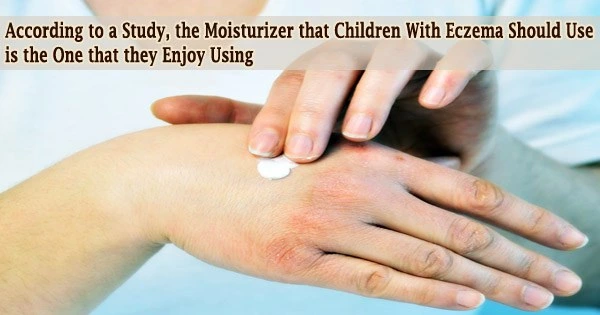There is no one type of moisturizer that is superior to another, according to the Best Emollients for Eczema trial. The significance of patient education and choice when determining which moisturisers to use for children with eczema is highlighted by this study, which is the first of its kind to directly compare several types of moisturizers.
The Lancet Child & Adolescent Health and the British Journal of General Practice have just published the findings of the study, which was financed by the National Institute for Health and Care Research (NIHR).
For the one in five children who have eczema, also known as atopic eczema/dermatitis, which results in dry and itchy skin, moisturizers (also known as emollients) are advised.
The NHS recommends more than 100 different moisturizers, at a cost of more than £100 million annually. Lack of research in this area causes NHS recommendations to vary greatly, which causes confusion and waste.
In the study, conducted by the universities of Bristol, Nottingham, and Southampton, 550 eczema patients under the age of 12 were randomly assigned to use one of four moisturizing products as their primary moisturizer (lotion, cream, gel or ointment) for 16 weeks.
For a year, parents kept diaries regarding their child’s eczema, and some were interviewed to learn more about how they used and felt about the moisturizers. Each child’s skin was independently examined as well.
The four types of moisturizer used in the study had equal effectiveness when used in conjunction with other eczema treatments. All moisturizer kinds were associated with common skin responses including itchiness or redness.
Users’ choices for moisturisers varied depending on how they felt and looked, and there was little knowledge of the many types of moisturizers. For instance, some people appreciated the “barrier” that ointments provided, whilst others like the way lotions quickly absorbed.
NHS prescribing of moisturisers is determined by locally agreed formularies. These formularies are based on both cost and perceived effectiveness. What this study does is emphasise the importance of having the four main types of moisturisers available on formularies for children with eczema, so that the right product can be used at the right time.
Tiffany Barrett
Professor Matthew Ridd, a GP and study lead from Centre for Academic Primary Care at the University of Bristol, said: “A study of this type has been long overdue. It has not been in the interest of the manufacturers to directly compare types of moisturiser in the way we have done in this trial.”
“Our findings challenge conventions about how often moisturisers need to be applied, which types are less likely to cause problems and which patients should be recommended certain types. For example, ointments are often suggested for more severe eczema, yet they were found to be no better.”
Hayley, the mother of Abriarna who took part in the trial, said: “The trial helped us find an emollient we had never used before, which has helped keep Abriarna’s skin in good condition for the longest time. Her eczema often requires a different emollient for various purposes, for example, Abriarna has a regular day-to-day moisturiser, which we found through the trial. She then has an emollient for days when her eczema is agitated and then an emollient to wash in as well as to use after handwashing.”
Tiffany Barrett, pharmacist and co-researcher added: “NHS prescribing of moisturisers is determined by locally agreed formularies. These formularies are based on both cost and perceived effectiveness. What this study does is emphasise the importance of having the four main types of moisturisers available on formularies for children with eczema, so that the right product can be used at the right time.”
Professor Hywel Williams, consultant dermatologist and co-researcher at the University of Nottingham, explained: “Along with anti-inflammatory treatments such as topical corticosteroids, emollients are a really key part of treatment for childhood eczema, preventing flares and helping to soothe the skin and improving the quality of life for children and their carers.”
“Our study shows that one size does not fit all, and points to the need for doctors to make parents aware of the different emollient types and to help them choose which one is mostly likely to work for them. At last we have evidence that supports the saying, ‘The best moisturisers are the ones the patient will use.’”
Professor Nick Levell, NIHR National Specialty Lead for Dermatology, said: “Around one in five children get eczema and the scratching and sleep loss affects school performance and exhausts children and their parents. This study confirms that parent and patient preference is very important in choosing a moisturiser to treat eczema. Some people prefer ointments, but others like gels, creams or lotions.”
“No one option is best. As reactions to moisturisers are common, it is important that the NHS provides a wide choice to help parents find something that soothes and calms their child’s fiery skin.”
If these results hold true for eczema sufferers, including adults, adolescents, and those with other dry skin disorders, more research is required.





